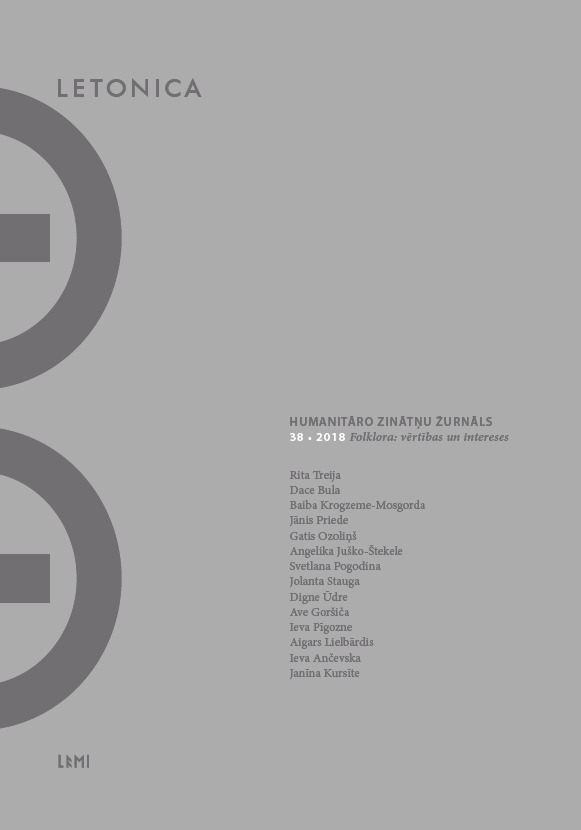Ugunskrusts Latvijā strīdīga kultūras mantojuma kontekstā
Firecross in Latvia in the Context of Controversial Cultural Heritage
Author(s): Digne ŪdreSubject(s): Cultural history, Museology & Heritage Studies, Customs / Folklore, Visual Arts, Nationalism Studies, Sociology of Art
Published by: Latvijas Universitātes Literatūras, folkloras un mākslas institūts
Keywords: firecross; swastika; controversial cultural heritage; cultural heritage studies; ornament
Summary/Abstract: Latvian ornament, graphic symbol – a cross with bent ends rotating in one or another direction – most often is referred to as a firecross. The diverse use of the symbol all through out the centuries has ensured a lasting place in the cultural space of Latvia, and within the last decade a firecross can be seen in public more often. However, its use has often led to conflict situations and has given rise to heated discussions. One of the most often proposed arguments for its defence is reference to the firecross as a truly Latvian cultural heritage. In simplified understanding cultural heritage is seen as an undoubtedly positive value. From this perspective, a firecross should not be viewed as a cultural heritage, because there are communities and societies, especially in an international context, which, given the connection of the symbol with Nazism, do not accept the symbol and stand against it. In the article the firecross has been analysed using the concept “contested heritage”. The author has examined the assumption that a firecross is a Latvian cultural heritage. This opinion voiced so often nowadays was most actively expressed and strengthened in the 1920s–1930s. However, before the Second World War controversial aspects in relation to the firecross emerged. Several problems were identified – the use of a firecross in Latvian military aviation and in organisations related to active movement of nationalism, as well as its religious interpretations. Consequently, it can be argued that in Latvia the history of nearly one century ensures an opportunity to follow the debates, conflict situations and attempts to explain, defend and provide arguments for the use of this controversial cultural heritage.
Journal: Letonica
- Issue Year: 2018
- Issue No: 38
- Page Range: 123-142
- Page Count: 20
- Language: Latvian

